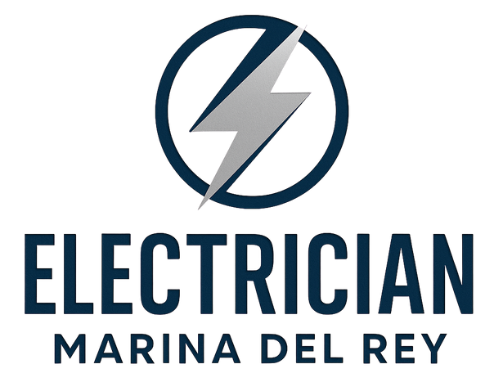Little explorers move faster than you think. To babies and toddlers, wall outlets look like fascinating little puzzles. Childproofing your outlets is a simple, highly effective step to prevent shocks and burns at home. Below, you’ll find proven solutions from quick DIY add-ons to longer-term upgrades so you can match the right protection to your family, budget, and living setup.
Know the Hazard (and the Goal)
Standard receptacles are built for convenience, not for curious kids. A metal object, damp fingers, or a damaged plug can complete a circuit and cause injury in a split second. The aim of childproofing is to build layers of protection that make accidental contact very unlikely while keeping the outlet usable for everyday life.
Top Ways to Childproof Electrical Outlets
1) Tamper-Resistant Receptacles (TRRs)
Consider tamper-resistant receptacles the best all-around choice for homes with young children. They look like standard outlets but have internal shutters that open only when a proper plug is inserted evenly into both slots – stopping a child from pushing a single object (like a paperclip) into one side.
Pros: Always active; nothing to lose; durable, long-term fix; meets code in many areas for new installations.
Cons: Requires swapping the outlet; best handled by a licensed electrician, especially in older homes.
2) Sliding Outlet Covers (Self-Closing Plates)
These replace your current faceplate with a spring-loaded cover that slides shut when a plug is removed. They’re more dependable than basic plug caps and simple to install.
Pros: DIY-friendly, inexpensive, and no loose pieces for kids to pull out.
Cons: If misaligned or worn, they may not fully close – check them periodically.
3) Box-Style Outlet Covers (In-Use Covers)
Outlets that power always-on devices (lamps, routers, purifiers) benefit from box covers, which enclose the plug and receptacle behind a latch.
Pros: Discourages unplugging and tampering; great for nurseries and play zones.
Cons: Bulkier appearance; choose a design with a secure latch and proper cord exit to prevent pinching.
4) Plug Caps (Use Sparingly)
Simple plastic caps push into outlet slots, but many toddlers can remove them – creating a choking risk and exposing the outlet again.
Pros: Lowest cost, instant install; fine for seldom-used outlets.
Cons: Easy to pull out; must be stored safely; unreliable for daily-use receptacles.
Go Beyond Covers for Added Protection
GFCI and AFCI Safeguards
Add circuit-level protection with GFCI (Ground-Fault Circuit Interrupter) outlets in baths, kitchens, laundry rooms, garages, and outdoors, and AFCI (Arc-Fault Circuit Interrupter) breakers or outlets in living spaces. GFCIs react to ground faults (often moisture-related), and AFCIs detect dangerous arcing—both cut power in milliseconds.
Cord Management & Furniture Placement
Hide cords: Use channels, covers, or raceways to keep cords out of sight and reach.
Anchor furniture: Position sturdy furniture in front of rarely used outlets never pinch cords under legs.
Avoid daisy chaining: Don’t link multiple power strips together; use one surge-protected strip with a cover if necessary.
Room-by-Room Plan
Nursery & Play Areas
Install TRRs or sliding covers on all reachable outlets.
Use box covers for devices that remain plugged in (monitors, purifiers).
Route cords behind furniture or inside covers; skip dangling chargers and string lights.
Kitchen, Bath, Laundry
Make sure outlets are GFCI protected; test monthly with the “TEST/RESET” buttons.
Unplug small appliances when not in use; store cords out of reach.
Dry spills immediately and avoid extension cords near sinks or tubs.
Living Room & Bedrooms
Use TRRs or sliding covers everywhere; box covers for entertainment hubs and routers.
Secure TVs and electronics; cover surge strips with lockable guards.
Run floor cords along walls in low-profile channels to prevent tripping and tugging.
Installation & Upkeep Tips
Shut power first: Turn off the breaker and confirm with a non-contact voltage tester before swapping plates or outlets.
Follow instructions: Install sliding/box covers per the manufacturer’s guide – misalignment weakens protection.
Buy certified: Choose UL-listed (or equivalent) products with sturdy latches kids can’t open.
Test monthly: Ensure sliders snap shut, box covers latch, and GFCI/AFCI devices trip/reset properly.
Replace on wear: Have a pro replace outlets that are cracked, loose, discolored, or warm to the touch.
Common Pitfalls
Using only plug caps: They’re easy to remove and easy to forget – opt for more secure solutions.
Low chargers left plugged in: Short cords invite curious tugs and chewing.
Old or damaged power strips: Frayed cords and loose switches are hazards – replace immediately.
Fabric over outlets: Don’t drape curtains or blankets over plugs; trapped heat can build up.
Renters vs. Owners
Renters: Use non-permanent options like sliding or box covers; ask your landlord about TRR or GFCI upgrades. Homeowners: Plan a whole-home approach: upgrade to TRRs, add GFCI/AFCI where recommended, and standardize cover styles and heights for consistency and safety.
When to Call a Licensed Electrician
Your home has aluminum or knob-and-tube wiring, or an outdated panel.
Outlets feel warm, spark, buzz, or have a burnt odor.
Breakers trip often or lights dim when appliances start.
You’re installing TRRs, adding circuits, or setting up GFCI/AFCI protection.
Quick Safety Snapshot
TRRs or sliding covers on all reachable receptacles.
Box covers on always-on plugs in kid zones.
Cords hidden, secured, and undamaged.
GFCI in wet areas; AFCI where advised.
Monthly tests and visual checks on the calendar.
Childproofing outlets isn’t a set-and-forget task – it’s a steady habit. Combine robust hardware (TRRs, sliding covers, GFCI/AFCI) with smart cord routing and routine checks, and you’ll create reliable, overlapping safeguards. Most importantly, pair those measures with attentive supervision. With a thoughtful plan, your home stays both kid-safe and everyday-use friendly.

